Howard Kirby lets us in on the tips and techniques that will help us train our puppy to walk nicely to heel
 credit: Archant
credit: Archant
In this, the third in our 2017 puppy training series, let’s tackle the ‘tricky one’: heelwork. For anyone that owns one of the gundog breeds, teaching the puppy to walk to heel is going to be important and, if you haven’t trained a dog before, at best it will require a lot of patience. By their very nature, the working gundog breeds are ‘forward going’, i.e. they want to get on, get busy, explore the world – all of which will show itself in a dog that pulls if it’s on a lead, or disappears if released.
So why do we make such big deal of heelwork? A dog that pulls on a lead is obviously unpleasant to manage and in the worst cases can be damaging for the owner and the dog itself. If the dog is constantly walking in front of you it will get under your feet, trip you up and be a general nuisance. And lastly, we need to consider pack dynamics. As a rule of thumb, the person or dog out in front is the leader, the master of the hunt. So, by allowing the dog to walk in front of us we surrender some of the control we will need as we go about our daily business or work a dog on a shoot day.
Having trained the puppy to respond to the ‘come, sit and stay’ command we need to teach him to move into the ‘finish’ position. The command ‘finish’ means job done, come and sit alongside me (not some fanciful passionate act derived in Finland). This is basically the sit at heel, and will make training the puppy to walk at heel easier. The dog can either go right around behind you or be trained to come in to the finish position from the side. My personal preference is for the puppy to move into position from the side.
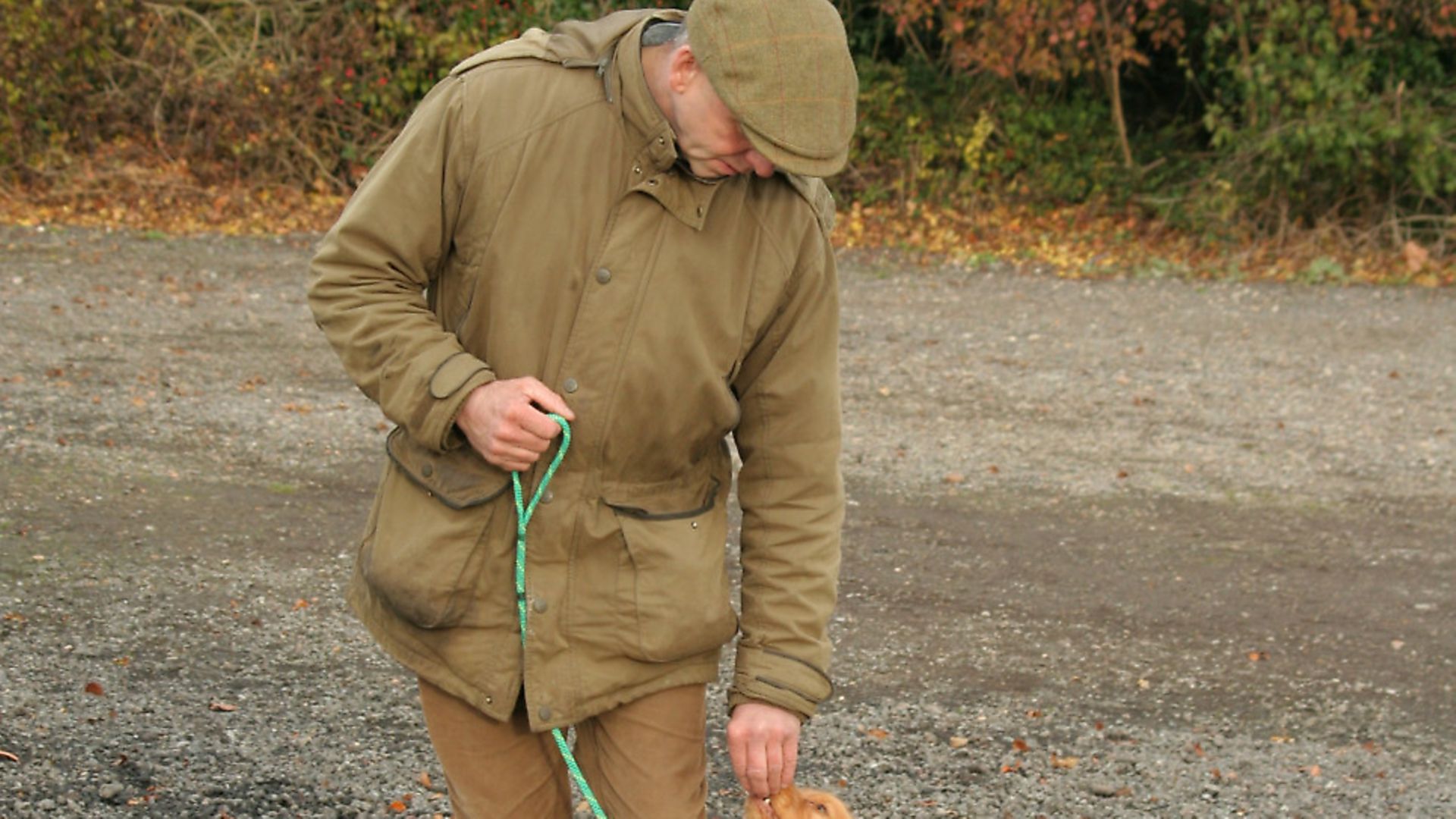 credit: Archant
credit: Archant
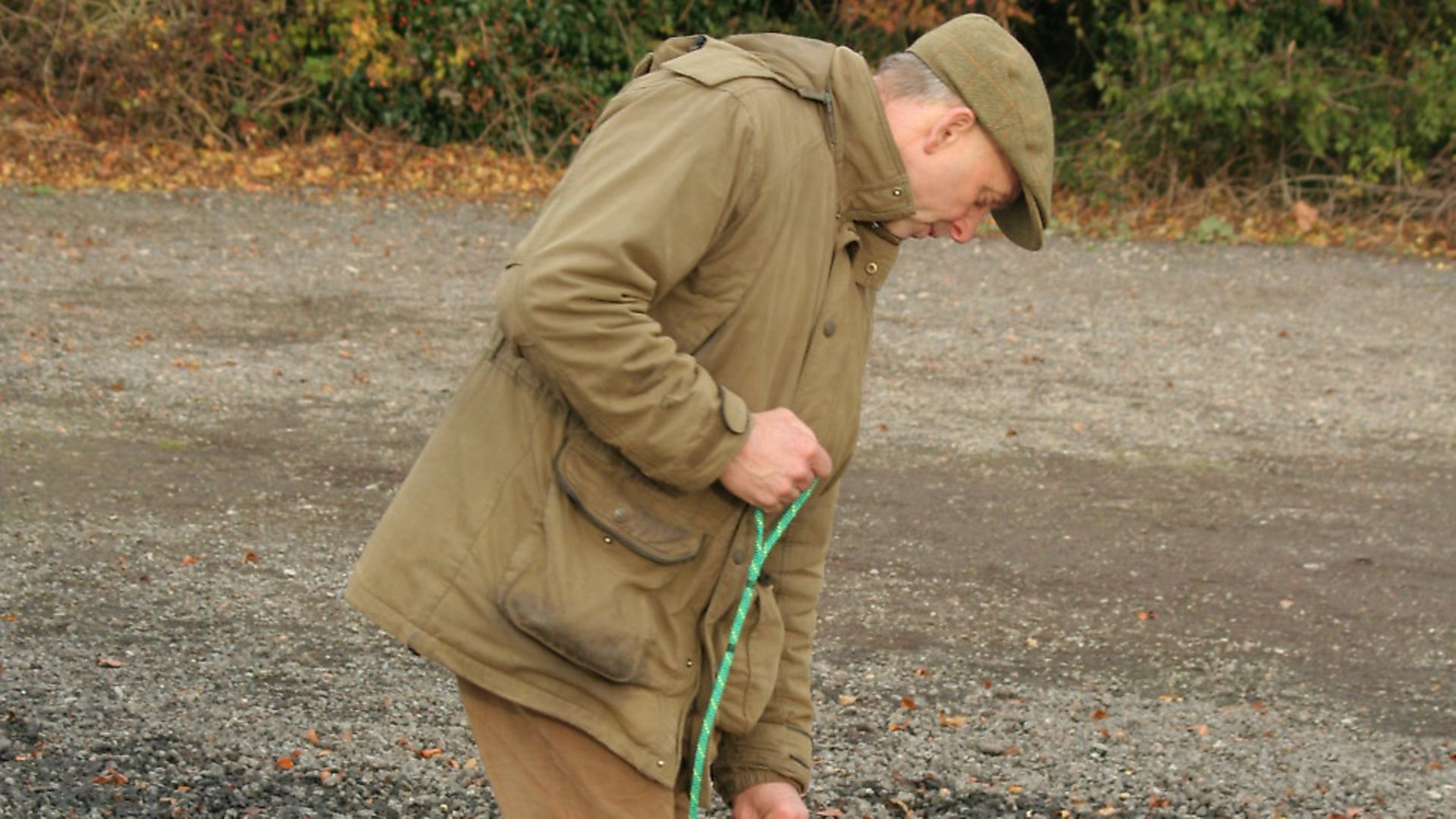 credit: Archant
credit: Archant
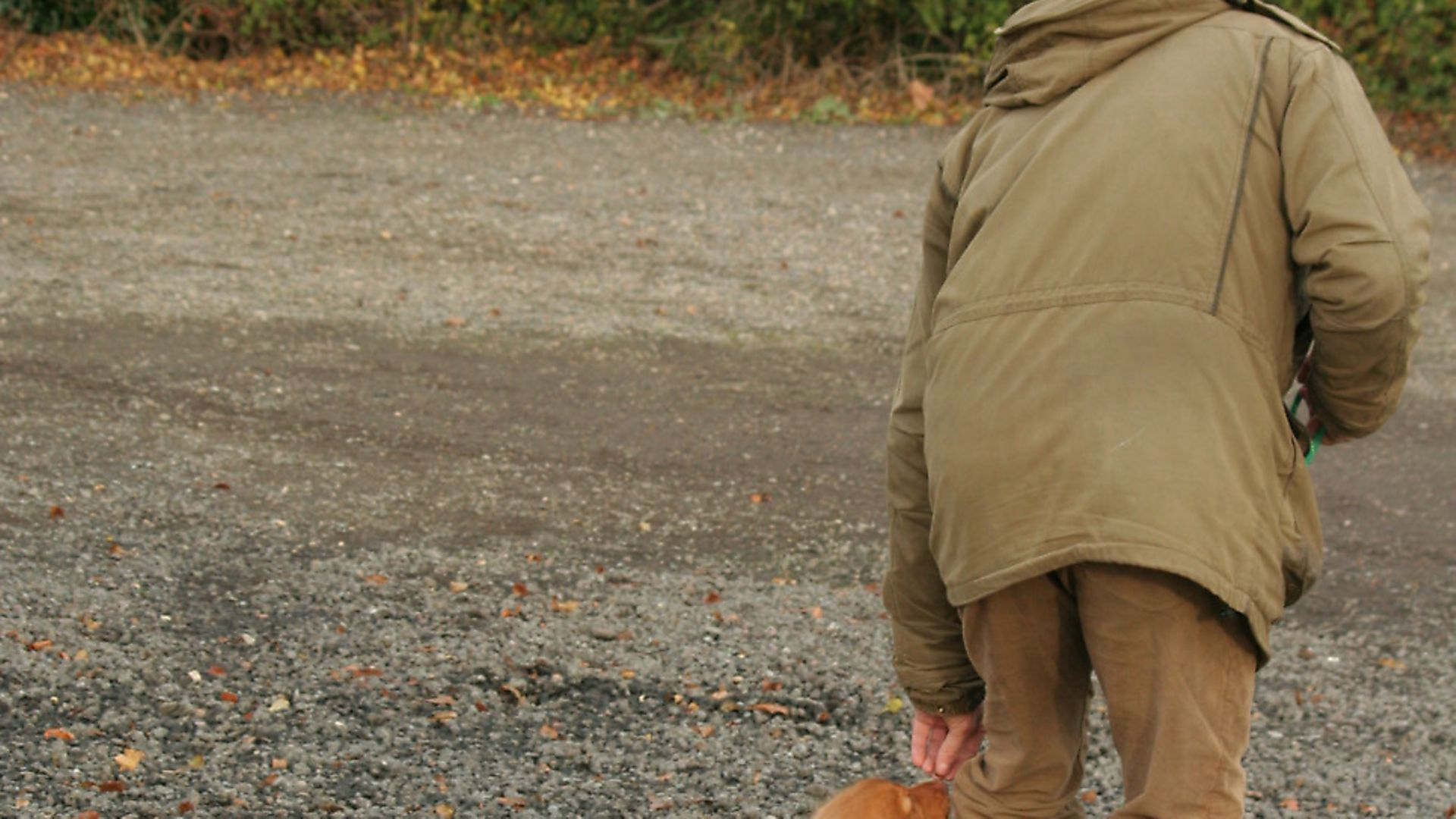 credit: Archant
credit: Archant
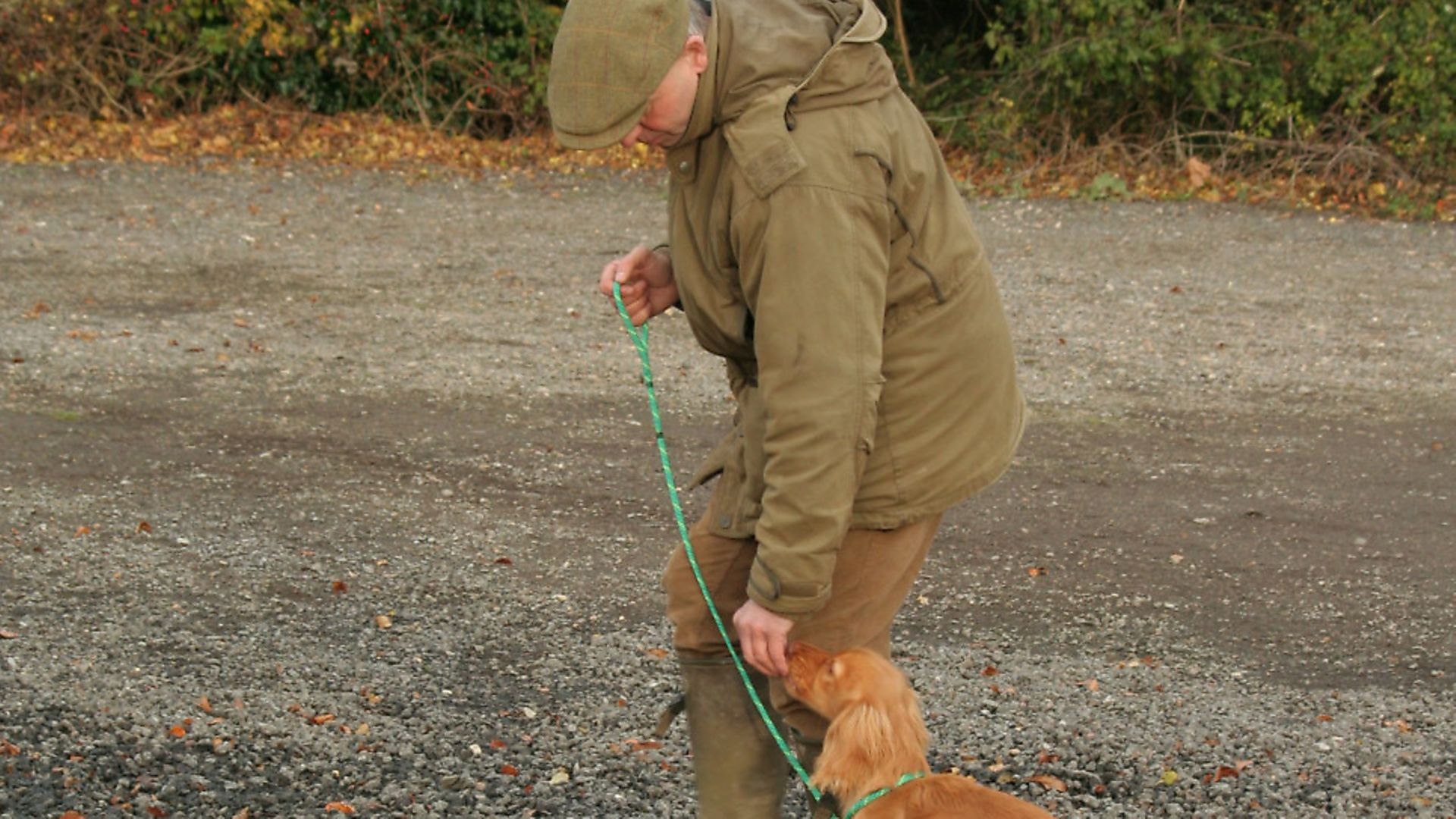 credit: Archant
credit: Archant
 credit: Archant
credit: Archant
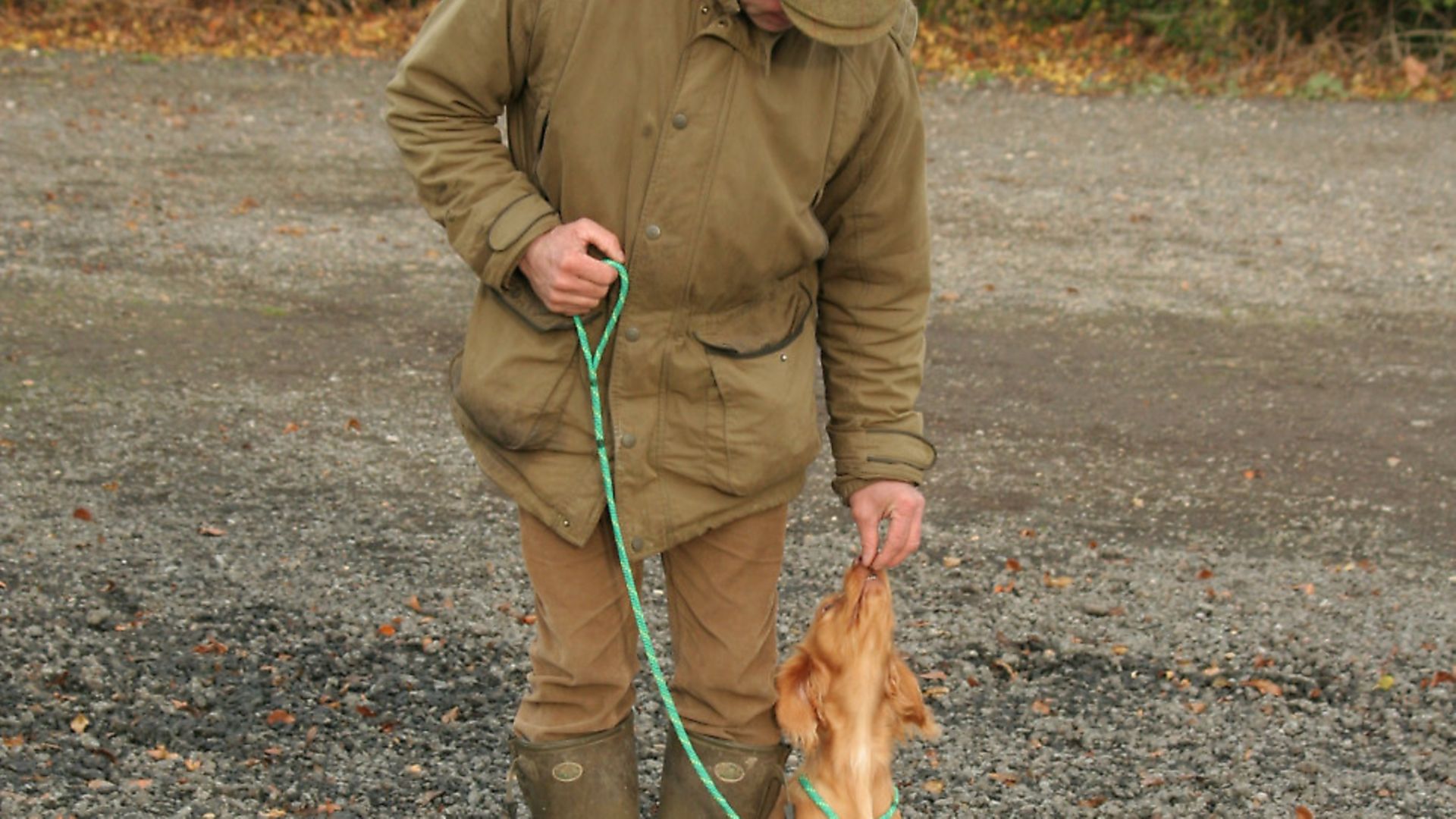 credit: Archant
credit: Archant
How to do it
To teach this, call the puppy to you and ask him to sit directly in front. Now put a piece of food in-between your left thumb and fingers and then lure him slowly out to your left while taking a step backwards. The step backwards is important as it gives the puppy room to turn and align itself to be able to sit nicely at heel. The puppy needs to be able to get at the food that you are luring him with, so keep the food right in front of his nose, allowing him to nibble at it as he follows your hand. If you try to rush this movement the pup will simply ‘lose’ the food lure, get distracted and move away. You will need to repeat this exercise over several sessions until he is moving fluidly into a nice neat sit at heel. Now that we have this behaviour established, teaching the dog to walk at heel on a loose lead will be easier… not easy, just easier!
The next job is to get the dog walking forwards. If you are using hoops or placeboards, use these as targets for yourself as much as for the puppy. If the puppy is being walked on your left, we are going to turn a semicircle to our left, or to the right if you intend to train him to be on your right-hand side. Use the sequence of behaviours that we have taught him to follow: call him to the front of you and say ‘sit’ – he will now be looking straight up at you. Say ‘good’ and then reward. Next, command him into the ‘finish’ position, say ‘good’ then reward. Before he loses concentration, put another food treat between your thumb and forefinger, bend your legs slightly and put the food just in front of the pup’s nose. Now slowly and gently move forwards, turning left as you do, and go out around the hoop, maintaining a gentle left-handed circle and stop when both of you arrive back in the hoop. Sit him at heel and reward. Easy, wasn’t it? ‘Nope Kirby it was blooming carnage,’ I hear you chunter. Don’t worry; be patient, and you and I – repeat you – will soon be able to do this.
Think about how difficult it is to rub your tummy and pat your head at the same time. Well, teaching yourself to train a young pup to walk to heel is a zillion times more difficult. The first time that most people try this exercise it’s like watching a drunk spider trying to do the Riverdance. All joking aside, you might wish to practise doing this exercise a few times without the puppy. Oh, if only we had a Robo-Dog (see the February edition of Sporting Shooter)!
Pitfalls to avoid
There are several mistakes that we can plan to avoid. Firstly, don’t tread on the puppy. If you do, any chance of getting him to walk to heel will diminish rapidly; the puppy will try to stay as far away from you and your clumsy size nines as he can. Secondly, ensure you have a food reward that is substantial enough for him to nibble at all the way around the semicircle. Thirdly, keep hold of the food reward – a hungry pup will try to pull the food reward away from you. It’s important that as you move forwards the pup can nibble away at the treat. And lastly, for now at least, don’t try to make the distance you cover too far as this will only make things difficult. Take a look at our video clip on the Sporting Shooter website (see p90) or, even better, buy a copy of our DVD Foundation Training, The First Four Weeks. Using a combination of reading, watching and gentle practice, this exercise will soon come together.
Once all is going well we can start to enlarge the semicircle or go right around the target. Get yourself four or more hoops and make a circle out of these and then you can go from hoop to hoop. Don’t forget that these are as much a target for you as they are for the puppy. Let’s face it, if you can’t accurately ‘drive’ and park your little puppy from one hoop to another then what made you think you’d be able to walk him to heel down to the pub? Be adventurous, change direction, about-turn, set yourself free, change your pace; keep the little pup wondering where you’re going next.
The next steps
Initially we are ensuring the trainee has constant access to a food reward but now we want to slowly move the hand up and off his nose for a few strides, while continuing to move and putting the food back on his nose before he gets distracted. If the puppy is constantly putting his nose down on the floor it’s because your classroom choice has too many distractions; you have dropped more food on the ground than you have fed to the dog; or you are not rewarding frequently enough to hold his attention.
Heelwork is something that many inexperienced handlers find difficult; eventually you will become a doubter, convincing yourself that these techniques don’t work or that your dog is difficult. Please don’t. Sit down, study the technique, ensure you’ve chosen a good place to work in, make sure the puppy is hungry enough to want the food reward and do enough consistent, perfect practice to establish the behaviour. If you find you are saying to yourself: ‘I’m really struggling to find enough time to do this,’ then ‘Get up earlier and go to bed later!’ is the caring, sharing advice that I bark at you. Oh no, I’ve done it again, I keep being horrible to you. I’m sorry but I have heard every excuse in the book and I just want to help you train your dog. There’s tons more to do and learn so keep your chin up. Let’s ensure that history doesn’t record 2017 as the year that we were outwitted by a cocker spaniel/Labrador/German shorthaired pointer, etc! n